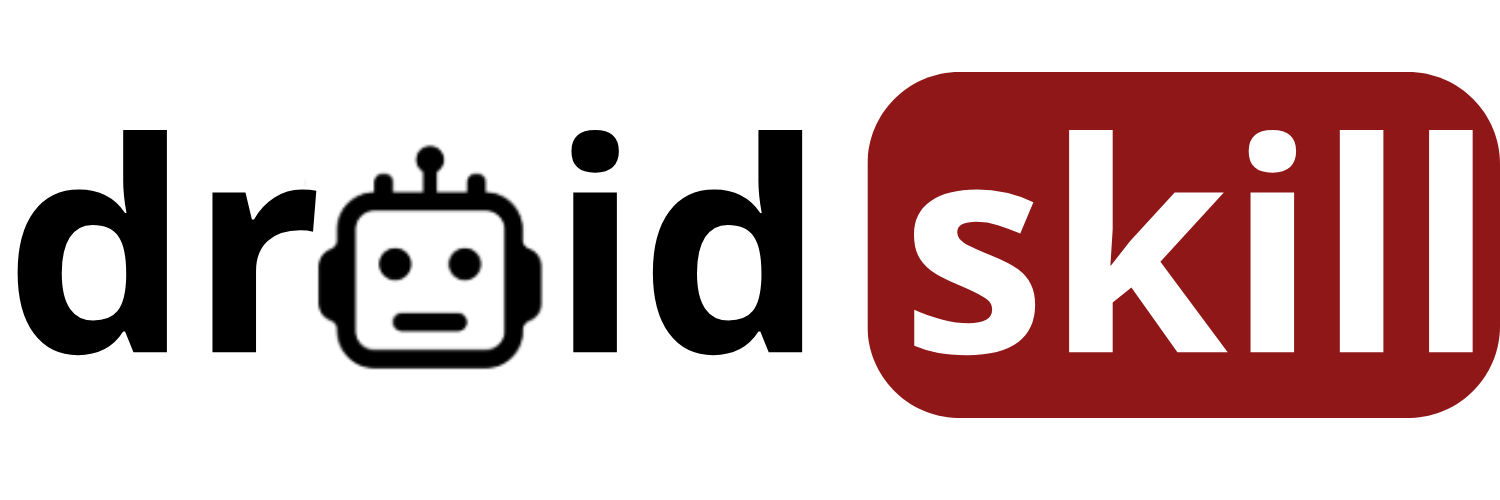Hey Android enthusiasts! Ready to dive into the exciting world of IoT integration on your Android device? You've come to the right place. This guide will walk you through everything you need to know, from understanding the basics to implementing advanced IoT solutions. We'll explore various apps that can help you connect and control your smart devices seamlessly. Let's get started!
Understanding IoT and Android
The Internet of Things (IoT) refers to the network of physical devices, vehicles, home appliances, and other items embedded with electronics, software, sensors, and network connectivity that enables these objects to collect and exchange data. Android, being the most popular mobile operating system, plays a crucial role in controlling and interacting with these IoT devices. Integrating IoT with your Android device opens up a world of possibilities, from home automation to industrial monitoring.
Why Integrate IoT with Android?
Integrating IoT with Android offers numerous benefits:
- Convenience: Control your smart devices from anywhere with an internet connection.
- Automation: Automate tasks and routines to save time and effort.
- Monitoring: Monitor your home, office, or industrial processes in real-time.
- Data Collection: Gather valuable data from your IoT devices for analysis and insights.
- Customization: Tailor your IoT solutions to meet your specific needs.
Key Components for IoT Integration
To successfully integrate IoT with your Android device, you'll need the following key components:
- Android Device: Your smartphone or tablet running the Android operating system.
- IoT Devices: Smart devices such as smart lights, thermostats, sensors, and actuators.
- Connectivity: A stable internet connection (Wi-Fi, cellular, or Ethernet).
- IoT Platform: A platform to manage and control your IoT devices (e.g., Google Cloud IoT, AWS IoT, Azure IoT).
- Android App: An app to interact with your IoT devices and the IoT platform.
Choosing the Right IoT Platform
Selecting the right IoT platform is crucial for a successful integration. Here are some popular options:
- Google Cloud IoT: A comprehensive platform offering device management, data analytics, and machine learning capabilities.
- AWS IoT: Amazon's IoT platform providing a wide range of services for connecting and managing IoT devices.
- Azure IoT: Microsoft's IoT platform offering secure and scalable solutions for IoT deployments.
- ThingSpeak: An open-source IoT platform for data logging and visualization.
- IFTTT (If This Then That): A user-friendly platform for creating simple IoT automations.
Developing Your Own Android IoT App
If you're a developer, you can create your own Android app to interact with your IoT devices. Here's a basic outline of the steps involved:
- Set up your development environment: Install Android Studio and the Android SDK.
- Choose an IoT SDK: Select an SDK that supports your chosen IoT platform (e.g., Google Cloud IoT SDK, AWS IoT SDK).
- Connect to the IoT platform: Authenticate your app with the IoT platform and establish a connection.
- Discover and control IoT devices: Use the SDK to discover and control your IoT devices.
- Implement user interface: Create a user-friendly interface for interacting with your IoT devices.
- Test and deploy: Thoroughly test your app and deploy it to the Google Play Store.
Using Existing Android IoT Apps
If you're not a developer, don't worry! There are plenty of existing Android apps that can help you integrate IoT with your device. Here are some of the best:
1. Google Home
Google Home is a central hub for controlling your smart home devices. It allows you to manage devices like smart lights, thermostats, and security cameras. The app integrates seamlessly with Google Assistant, enabling voice control of your devices. You can create routines to automate tasks, such as turning on the lights and adjusting the thermostat when you arrive home. The user interface is intuitive and easy to navigate, making it a great choice for beginners.
Download Google HomeSearch Google Home on Play Store
2. Samsung SmartThings
Samsung SmartThings is a powerful platform for controlling a wide range of smart devices, including those from Samsung and other manufacturers. The app allows you to create scenes and automations to control multiple devices at once. You can also monitor your home's security with connected sensors and cameras. SmartThings offers advanced features like geofencing, which allows you to trigger actions based on your location. The app is compatible with a variety of devices, making it a versatile choice for smart home enthusiasts.
Download Samsung SmartThingsSearch Samsung SmartThings on Play Store
3. Amazon Alexa

The Amazon Alexa app is the companion app for Amazon Echo devices. It allows you to set up and manage your Echo devices, as well as control other smart home devices that are compatible with Alexa. You can use the app to create routines, set timers, and play music. Alexa also offers a wide range of skills that can extend its functionality. The app is constantly being updated with new features and integrations, making it a powerful tool for controlling your smart home.
Download Amazon AlexaSearch Amazon Alexa on Play Store
4. IFTTT
IFTTT (If This Then That) is a platform that allows you to create simple automations between different apps and devices. You can use IFTTT to connect your Android device to a wide range of IoT devices and services. For example, you can create an applet that automatically turns on your smart lights when you receive a notification on your phone. IFTTT is easy to use and offers a wide range of pre-built applets, making it a great choice for beginners.
Download IFTTTSearch IFTTT on Play Store
5. Tasker
Tasker is a powerful automation app for Android that allows you to create complex tasks and routines. You can use Tasker to automate a wide range of actions on your device, including controlling IoT devices. For example, you can create a task that automatically turns on your smart lights when you arrive home, based on your location. Tasker is highly customizable and offers a wide range of plugins, making it a great choice for advanced users.
Download TaskerSearch Tasker on Play Store
6. Blynk
Blynk is an IoT platform that allows you to easily build and control IoT projects. The Blynk app allows you to create custom dashboards for controlling your IoT devices. You can use Blynk to control devices like Arduino, Raspberry Pi, and ESP8266. The platform offers a wide range of widgets and features, making it a great choice for hobbyists and developers.
Download BlynkSearch Blynk on Play Store
7. MQTT Dash
MQTT Dash is an Android app that allows you to create custom dashboards for controlling MQTT-enabled devices. MQTT is a lightweight messaging protocol that is commonly used in IoT applications. With MQTT Dash, you can easily create buttons, sliders, and other widgets to control your devices. The app is highly customizable and offers a wide range of features, making it a great choice for advanced users.
Download MQTT DashSearch MQTT Dash on Play Store
8. Home Assistant
Home Assistant is an open-source home automation platform that allows you to control a wide range of smart devices. The Home Assistant app allows you to control your devices from your Android device. You can create custom dashboards and automations to control your home. Home Assistant is highly customizable and offers a wide range of integrations, making it a great choice for advanced users.
Download Home AssistantSearch Home Assistant on Play Store
9. OpenHAB
openHAB is another open-source home automation platform that provides a unified interface for controlling various smart home devices. The openHAB app allows you to access and control your openHAB server from your Android device. It supports a wide range of protocols and technologies, making it highly versatile for different IoT setups. You can create custom rules and scenes to automate your home according to your preferences.
Download OpenHABSearch OpenHAB on Play Store
10. Tuya Smart
Tuya Smart is a popular platform for controlling a wide range of smart devices, particularly those manufactured by Tuya-compatible brands. The Tuya Smart app allows you to easily add and manage your devices, create scenes, and set up automations. It supports voice control through Amazon Alexa and Google Assistant, making it convenient to control your devices hands-free. The app is user-friendly and offers a wide range of features for smart home management.
Download Tuya SmartSearch Tuya Smart on Play Store
Security Considerations
When integrating IoT with your Android device, it's important to consider security. Here are some tips to keep your devices and data safe:
- Use strong passwords: Use strong, unique passwords for all your IoT devices and accounts.
- Enable two-factor authentication: Enable two-factor authentication whenever possible.
- Keep your devices updated: Keep your IoT devices and Android device updated with the latest security patches.
- Use a secure network: Connect your IoT devices to a secure Wi-Fi network.
- Monitor your devices: Monitor your IoT devices for suspicious activity.
Troubleshooting Common Issues
Here are some common issues you may encounter when integrating IoT with your Android device, and how to troubleshoot them:
- Device not connecting: Check your internet connection, make sure the device is powered on, and ensure the device is compatible with your chosen IoT platform.
- App not working: Clear the app's cache and data, reinstall the app, or try a different app.
- Automation not working: Check the automation rules, make sure the devices are connected, and ensure the triggers are configured correctly.
- Security concerns: Change your passwords, enable two-factor authentication, and monitor your devices for suspicious activity.
Advanced IoT Integration Techniques
Once you've mastered the basics of IoT integration, you can explore some advanced techniques:
- Data analytics: Use data analytics tools to analyze the data collected from your IoT devices.
- Machine learning: Use machine learning algorithms to automate tasks and improve the performance of your IoT devices.
- Edge computing: Perform data processing and analysis on the edge, closer to the IoT devices, to reduce latency and improve performance.
- Custom integrations: Create custom integrations between different IoT platforms and services.
The Future of IoT and Android
The future of IoT and Android is bright. As technology advances, we can expect to see even more innovative and exciting IoT applications. Android will continue to play a crucial role in controlling and interacting with these devices. Some trends to watch out for include:
- Increased adoption of 5G: 5G will enable faster and more reliable connectivity for IoT devices.
- More sophisticated AI: AI will be used to automate tasks and improve the performance of IoT devices.
- Greater focus on security: Security will become even more important as IoT devices become more prevalent.
- Integration with other technologies: IoT will be integrated with other technologies such as blockchain and augmented reality.
Conclusion
Integrating IoT with your Android device opens up a world of possibilities. Whether you're a beginner or an advanced user, there are plenty of apps and platforms to help you get started. By following the tips and techniques in this guide, you can create your own smart home, automate your tasks, and monitor your environment in real-time. So, what are you waiting for? Dive into the world of IoT and Android today!
Happy IoT-ing!


